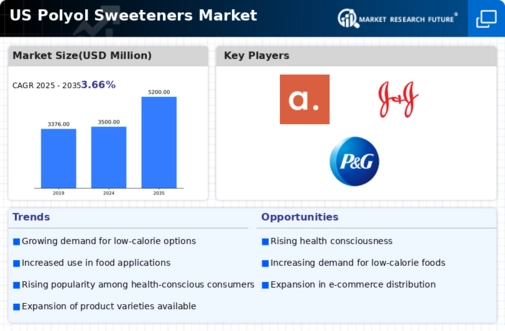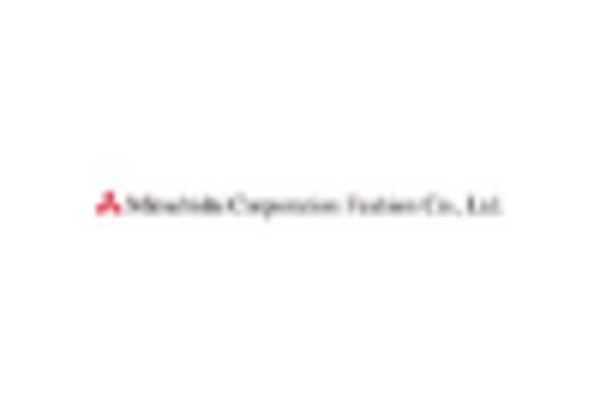Innovations in Food Technology
Advancements in food technology are playing a pivotal role in shaping the polyol sweeteners market. Innovations in extraction and processing methods have improved the quality and availability of polyol sweeteners, making them more appealing to manufacturers. Additionally, the development of new formulations that combine polyol sweeteners with other ingredients is enhancing their functionality in various applications. The market is witnessing a trend towards the use of polyol sweeteners in baked goods, confectionery, and dairy products, driven by their ability to provide sweetness without the calories. This technological progress indicates that the polyol sweeteners market is likely to experience continued growth as manufacturers leverage these innovations to meet consumer demands.
Increased Focus on Clean Label Products
The clean label movement, characterized by transparency in ingredient sourcing and production processes, is significantly influencing the polyol sweeteners market. Consumers are increasingly scrutinizing food labels, favoring products with recognizable and natural ingredients. This trend has prompted manufacturers to reformulate their products, incorporating polyol sweeteners as a healthier alternative to artificial sweeteners. According to industry reports, the clean label segment is expected to account for over 30% of the total sweetener market by 2026. This shift indicates a growing consumer preference for polyol sweeteners, which are perceived as more natural and less processed, thereby enhancing their appeal in the marketplace.
Growing Awareness of Diabetes Management
The rising prevalence of diabetes in the US has heightened awareness regarding dietary choices, particularly the consumption of sugars. This has led to an increased interest in polyol sweeteners, which offer a lower glycemic index compared to traditional sugars. As individuals seek to manage their blood sugar levels, the polyol sweeteners market is likely to benefit from this trend. Research indicates that nearly 34 million Americans are living with diabetes, creating a substantial market for products that utilize polyol sweeteners. This growing awareness suggests that manufacturers may increasingly incorporate these sweeteners into their formulations to cater to the needs of diabetic consumers.
Rising Demand for Low-Calorie Alternatives
The increasing awareness of health and wellness among consumers drives the demand for low-calorie food and beverage options. As obesity rates rise, individuals are seeking alternatives to traditional sugars, which has led to a notable shift towards polyol sweeteners. In the polyol sweeteners market, products like erythritol and xylitol are gaining traction due to their low caloric content and minimal impact on blood sugar levels. Recent data indicates that the market for low-calorie sweeteners is projected to grow at a CAGR of approximately 5.5% through 2027. This trend suggests that manufacturers are likely to expand their offerings of polyol sweeteners to cater to the evolving preferences of health-conscious consumers.
Expansion of the Food and Beverage Industry
The ongoing expansion of the food and beverage industry in the US is a crucial driver for the polyol sweeteners market. As new products are developed and existing ones are reformulated, the demand for polyol sweeteners is likely to increase. The market is witnessing a surge in the introduction of sugar-free and reduced-sugar products, particularly in categories such as snacks, beverages, and dairy. Recent statistics show that the sugar-free beverage segment alone is expected to reach $30 billion by 2025, further propelling the use of polyol sweeteners. This growth suggests that manufacturers are increasingly recognizing the potential of polyol sweeteners to meet consumer demands for healthier options.

















Leave a Comment